Understanding Fever Severity: When Is a Temperature of 103 Dangerous?
How high is too high when it comes to fever? Explore the various fever thresholds and symptoms across different age groups, and learn when to seek medical attention.
Fever Basics: Why Does the Body Produce Fevers?
A fever is an increase in body temperature, often a sign that the body is working hard to fight off an infection. Fevers are generally considered to be a temperature of 100.4 degrees Fahrenheit or above. Fevers can be caused by a variety of factors, including viruses, bacterial infections, extreme sunburn, certain inflammatory conditions, and some medications.
Symptoms of a fever may include sweating, shivering, headache, muscle aches, dehydration, and general weakness. A high temperature, between 103 and 106 degrees Fahrenheit, may also cause confusion, hallucinations, and irritability. Fevers typically subside within a few days.
Fever Thresholds and Concerns by Age Group
Newborns and Toddlers
For newborns and toddlers, the best way to take their temperature is with a digital thermometer in the rectum. Infants less than two months old should not be given any fever-reducing medication without a doctor’s evaluation. A temperature below 97 degrees Fahrenheit in a newborn may be a sign of illness, and a rectal temperature of 100.4 degrees Fahrenheit or higher in a baby three months or younger requires a call to the doctor.
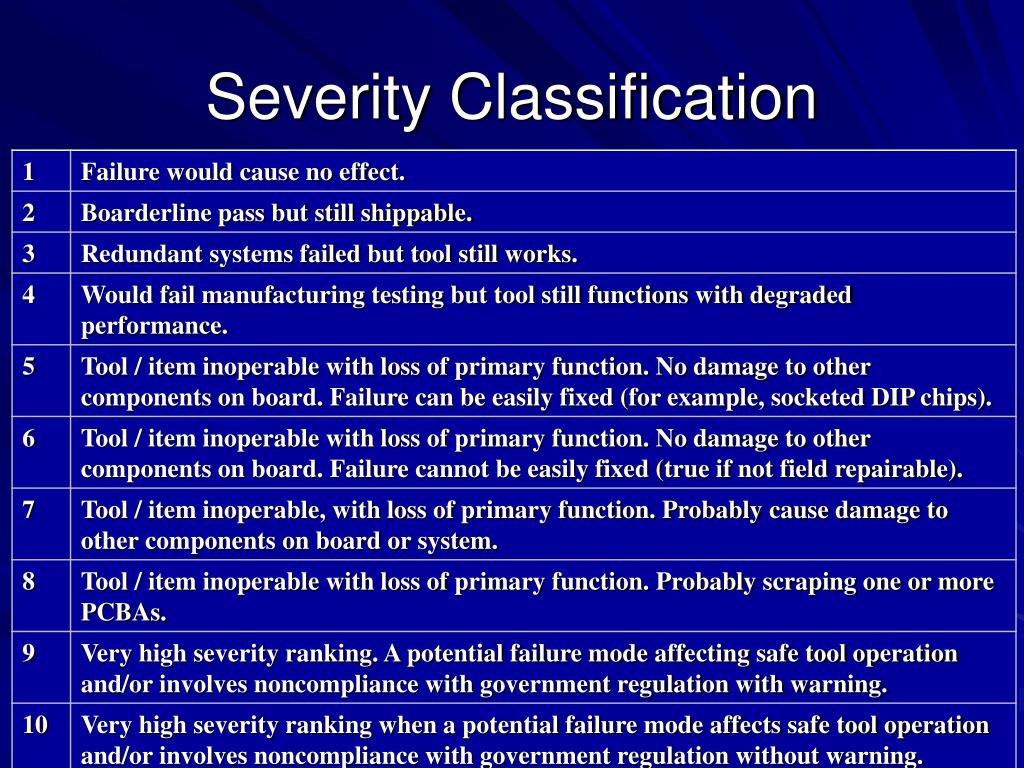
Children
Once a child reaches four or five years old, their temperature can be taken orally with a digital thermometer. If a child has a fever of 102 degrees Fahrenheit or more that lasts longer than three days, it’s time to call the pediatrician. Acetaminophen or ibuprofen can be given to a child with a high fever, but never aspirin. Behavior is a good indicator of whether medical attention is needed – if a child is still active, alert, and eating/drinking normally, the illness is likely not serious.
Teenagers
Teenagers can also have their temperature taken orally with a digital thermometer. Seek medical attention if a teen has a fever of 103 degrees Fahrenheit or more that lasts longer than three days. Encourage your teenager to stay hydrated and rest, and avoid physical activity. Call the doctor if your teen experiences repeated vomiting, severe stomach pain, or a disabling headache.
Adults
In adults, a fever is usually not considered dangerous until it reaches 103 degrees Fahrenheit or higher. Adults can use a digital oral thermometer to measure their temperature. Seek medical attention if an adult’s fever lasts longer than three days at 103 degrees Fahrenheit or more. Adults can take ibuprofen or acetaminophen to reduce a fever, but should not mix medications.
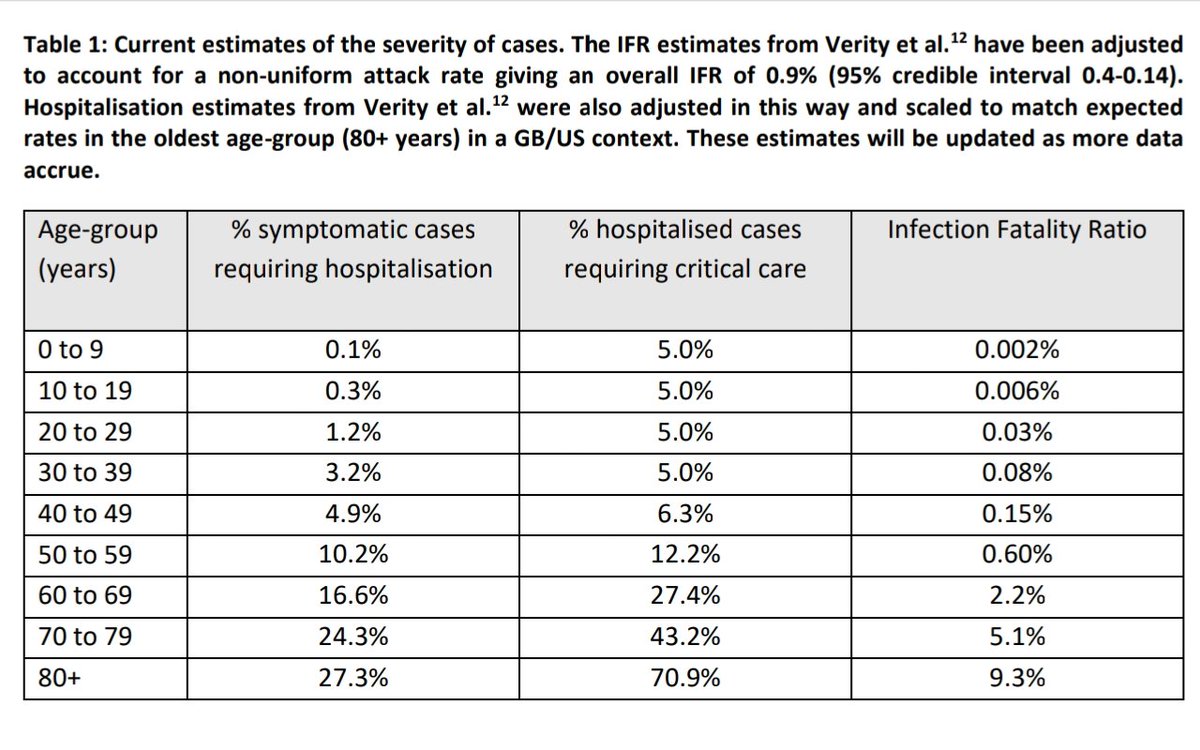
Older Adults
For older adults, a fever of 101 degrees Fahrenheit or higher may be a sign of a serious viral or bacterial infection. Older adults should not self-treat a fever and should consult a doctor, as their immune systems may be weaker.
When to Seek Medical Attention for a Fever
In general, it’s a good idea to call a doctor if a fever lasts longer than three days or reaches a concerning level based on the patient’s age. Immediate medical attention is required for infants under three months with a fever, or for any individual who displays symptoms like repeated vomiting, severe stomach pain, or a disabling headache.
Fever Management Techniques
Depending on the individual’s age, appropriate fever management techniques may include using the right type of thermometer, administering over-the-counter fever reducers like acetaminophen or ibuprofen, ensuring plenty of rest and hydration, and avoiding aspirin in children and teens. It’s important to closely monitor a fever and seek medical care when necessary.

The Importance of Evaluating Fever Holistically
While a high fever can be concerning, it’s crucial to consider the individual’s overall symptoms and behavior, not just the numerical temperature reading. Fever is the body’s natural response to fight infection, and the severity of the illness is not always directly proportional to the height of the fever. By understanding fever thresholds and symptoms across different age groups, individuals can make informed decisions about when to seek medical attention.
What You Need to Know About Fevers
Have you ever been woken up in the middle of the night by a child who isn’t feeling well, with a forehead that is hot to the touch? Or was it you who woke up not feeling well? This is when you ask yourself whether you should pull out the thermometer or if it’s time to call the doctor.
Why Do Our Bodies Produce Fevers?
A fever is an increase in body temperature, often because the body is working hard to fight off an infection. Although it may not feel like it, a fever is a good thing for the body. It’s generally accepted that a true fever is a temperature of 100.4 degrees or above. Fevers may be caused by:
- A virus
- Bacterial infection
- Extreme sunburn
- Certain inflammatory conditions
- Some medications
Symptoms of a fever may include sweating, shivering, headache, muscle aches, dehydration and general weakness. A high temperature (between 103 and 106) may cause confusion, hallucinations and irritability. A fever typically goes away in a few days.
A fever typically goes away in a few days.
Fevers vary in severity for people of different ages and require different techniques including which thermometers to use, appropriate medicines, and when to call the doctor.
Newborns/Toddlers
The best way to take a newborn or toddler’s temperature is with a digital thermometer in the rectum. Make sure to label the rectal thermometer so it is not used orally. Infants less than two months of age should not be given any medicine for fever without a doctor’s evaluation.
An elevated temperature may be a sign of illness. Call the doctor if:
- A newborn has a body temperature less than 97. Newborns may not be able to regulate body temperature, becoming cold rather than hot.
- Three months or younger and rectal temperature is 100.4 or higher.
- Between three and six months and has a temperature of 102 or higher and seems irritable or uncomfortable.
- Between six to 24 months and has a temperature of 102 or higher and the temperature lasts longer than one day.
 If your child displays other symptoms, like a cold or cough, call your child’s doctor sooner than you normally would.
If your child displays other symptoms, like a cold or cough, call your child’s doctor sooner than you normally would.
Children
If a child has a fever of 102 or more lasting longer than three days, call their doctor. Once a child reaches four or five years of age, you can take his or her temperature orally using a digital thermometer. If your child is uncomfortable, you can give him or her acetaminophen or ibuprofen. Be careful to not give your child more than one medicine that contains acetaminophen. Never give aspirin to a child. Make sure a child with a high fever gets plenty of rest and drinks lots of fluids to avoid dehydration.
For children, behavior is a good indicator of whether or not you need to call the pediatrician. If your child is still interested in playing, feeling alert and eating and drinking normally, the illness is probably not serious. A child with a fever who doesn’t want to eat but is still drinking and urinating normally is most likely OK. You should call your child’s doctor if your child:
You should call your child’s doctor if your child:
- Vomits or has a severe stomachache
- Appears lethargic
- Has a febrile seizure
- Has been left in a hot car and has a fever. This requires immediate medical attention.
Teens
For teenagers with a fever of 103 or more lasting longer than three days, seek medical attention. Similar to children, teenagers can have their temperature taken orally with a digital thermometer. Do not give aspirin to a teenager.
Encourage your teen to drink plenty of fluids to prevent dehydration. Liquids like water, juice or broth are all good options to keep a teen hydrated. If your teenager is active, his or her body will create heat, making it very difficult to reduce the fever. Dressing in light clothing will make teens more comfortable if they’re experiencing discomfort. Make sure your teen is resting and avoiding physical activity. Seek medical attention if your teenager experiences any of the following:
- Repeated vomiting
- Severe stomachache
- Headache that causes discomfort
Adults
A fever in adults is usually not considered dangerous until it reaches 103 or higher. Similar to children and teens, an adult may use a digital oral thermometer to measure body temperature. Adults should seek medical attention if their fever has lasted longer than three days at a temperature of 103 or more. An adult should not treat a fever that is 102 or less unless otherwise instructed by a doctor. A doctor may advise taking ibuprofen (Advil) or acetaminophen (Tylenol). Unlike children and teens, adults can take the recommended amount of aspirin in order to reduce their fever. Do not mix medications when trying to reduce your fever! If you have been taking medicine for three days and your fever is staying consistent at 103 or higher, call your doctor.
Similar to children and teens, an adult may use a digital oral thermometer to measure body temperature. Adults should seek medical attention if their fever has lasted longer than three days at a temperature of 103 or more. An adult should not treat a fever that is 102 or less unless otherwise instructed by a doctor. A doctor may advise taking ibuprofen (Advil) or acetaminophen (Tylenol). Unlike children and teens, adults can take the recommended amount of aspirin in order to reduce their fever. Do not mix medications when trying to reduce your fever! If you have been taking medicine for three days and your fever is staying consistent at 103 or higher, call your doctor.
Older Adults
A fever of 101 or higher in an older adult may be a sign of a serious viral or bacterial infection. Older adults may use a digital oral thermometer to take their temperature, but this may prove difficult for adults who have tongue tremors, dementia or other neurobehavioral disorders. If you are unable to use a digital thermometer, there are other types available. Prevent dangerous body temperatures in older adults by drinking lots of fluids, avoiding excessive exercise, staying indoors during peak heat times, taking cool showers and baths and keeping warm in cool environments.
Prevent dangerous body temperatures in older adults by drinking lots of fluids, avoiding excessive exercise, staying indoors during peak heat times, taking cool showers and baths and keeping warm in cool environments.
When Do Fevers Become an Emergency?
If a child or adult is or has been experiencing any of the following symptoms of a fever, seek medical treatment immediately:
- A severe headache
- Sore throat
- Eye sensitivity to bright light
- Breathing or chest pain
- Mental confusion
- Stiff neck when trying to bend forward
- Persistent vomiting
- Extreme listlessness or irritability
- Abdominal pain
- Other unexplained symptoms
Contact you doctor or message your primary care doctor or pediatrician using My UnityPoint.
Want To See a Doctor Right Now About a Fever?
Did your child wake up in the middle of the night warm to the touch? Is their fever and symptoms questionable enough that you think they should see a doctor, but the fever is not serious enough to go to the emergency room? UnityPoint Health Virtual Care allows you to speak to a provider by secure online video at all hours of the day and night. If medication is needed, a provider can prescribe medication from your appointment and send to the pharmacy of your choice.
If medication is needed, a provider can prescribe medication from your appointment and send to the pharmacy of your choice.
Treat High Fever in Children and Adults
- Online Care
- Scheduled Care
- Locations
- Careers
- Pay My Bill
- Testimonials
Eagan, Woodbury and Vadnais Heights
Contact UsCareersFAQsUR Blog
The Urgency Room is your comprehensive one-stop location for your urgent needs. Our standalone facilities are expertly outfitted with emergency trained providers and state-of-the-art equipment to handle the variety of aches, pains, breaks, and illnesses that come through our doors every day.
Schedule an appointment at any of our three locations, open 365 days a year, including holidays, from 8:00 AM to 9:00 PM. Our telehealth services are available from 8:00 AM to 8:00 PM. Situated in Woodbury, Vadnais Heights, and Eagan, The Urgency Room is the quick and convenient alternative to overcrowded and understaffed emergency rooms for residents throughout the Twin Cities.
If you or your child has a high fever, don’t hesitate to seek care. Don’t drudge through hours of waiting at your typical emergency room. Instead, get evaluated and treated at your nearest Urgency Room, fast. With short wait times, friendly staff, and highly experienced providers, you’ll be back to yourself in no time.
What Is Considered a High Fever in Adults?
Most adults have a baseline temperature of 98.6 F. Generally, temperatures of 103 degrees Fahrenheit or higher are considered high for an adult. However, when an adult sustains a temperature higher than 100 degrees Fahrenheit for an unusually long period of time, it could also be cause for concern. It’s best to act on the safe side and seek care at The Urgency Room right away. Fevers can be very complex and can stem from many different types of illnesses or infections. The providers at The Urgency Room can accurately assess and diagnose the source of your high fever.
It’s best to act on the safe side and seek care at The Urgency Room right away. Fevers can be very complex and can stem from many different types of illnesses or infections. The providers at The Urgency Room can accurately assess and diagnose the source of your high fever.
Fevers occur when the hypothalamus, your body’s “thermostat,” increases your body’s temperature because of fever-producing substances called pyrogens. When pyrogens are released into your blood, you could wind up with a dangerously high fever. Pyrogens could come from bacteria, drugs, toxins, viruses, and fungi. The severity of fever and its detrimental results increase as your condition persists—which is why getting a high fever treated sooner is always your best option.
High Fever Thresholds
Once a fever goes beyond the high level, an adult enters dangerous fever levels (104 F – 107 F). This dangerous level, also known as hyperpyrexia, is considered a medical emergency and you should seek medical care immediately.
To give you a rough idea of the fever levels in adults, here’s a list:
- Low high fever: 100 F – 101 F
- Intermediate high fever: 102 F
- Serious high fever: 103 F – 104 F
- Hyperpyrexia: 104 F – 107 F
It is sometimes difficult to pinpoint the source of a fever as there are an incredible number of diseases and illnesses that have high temperatures as a side effect or symptom. And while fevers most frequently accompany a viral illness, our providers will try and get down to the exact source.
What Is Considered a High Fever in Children?
A high fever in a child may be any temperature higher than 100 degrees Fahrenheit, especially if that temperature is sustained above the 100-degree threshold for extended periods. If your child’s temperature is not showing signs of reducing, you should seek emergency care.
The severity and damage a fever can cause vary by the age of the child. Younger children and infants should be seen by a medical provider sooner than an adult or teenager would with a similar temperature.
In addition to high or rising temperatures that last longer than 24 hours, a child with a high fever could have other obvious symptoms. Be on the lookout for severe diarrhea, dehydration, repeated vomiting, seizures, or rash. Your child is especially susceptible to serious infections if they have any type of immune disorder or haven’t received immunizations.
When minutes matter, especially if your child has a high fever, get to your nearest Urgency Room—we have shorter wait times and state-of-the-art equipment to treat your illness fast.
When Is It Time to Seek Care?
As listed above, the duration one with a high fever should wait to seek medical treatment varies depending on age. An infant should be seen right away even if it has temperatures constituting a low fever in adults. Similarly, an adult can wait until the fever persists for a day or two while a child, depending on its age, should be seen as soon as they’ve had a fever of any temperature for longer than 24 hours.
You may try fever-reducing medicines (ones containing acetaminophen) before seeking medical care, however, always consult with a medical provider if you are uncertain what medicine to administer for your child.
Consider Using Telehealth for Less Intense Fevers
If you’re not experiencing a medical emergency but you’re concerned about your fever level or that of your child, consider using online care services. The Urgency Room utilizes video technology for patient convenience and overall experience improvement. You won’t have to waste precious time in your vehicle or using public transportation, not to mention waiting in the lobby. Just follow the instructions on our Online Care page.
How Can The Urgency Room Treat High Fevers in Adults and Children?
The Urgency Room is well-equipped to take care of you or your child when experiencing a high fever. Prolonged fever or dangerously high fevers can cause an onslaught of residual health problems, so it is always best to seek care rather than ignore the problem.
All three Urgency Room locations are equipped with providers and staff who have extensive emergency room experience as well as equipment to assess, diagnose and treat your illness or injury.
Up-to-date technology at our Urgency Room locations includes:
- X-ray machines
- CT scanner
- Ultrasound
- High-complexity lab
- Sedation for adults and children
The Urgency Room also has a large library of at-home aftercare videos for you to reference after you’ve left our in-person care. Before, during, and after illness, The Urgency Room has your well-being as our first priority.
Medical Care for a Wide Range of Symptoms, Available In-Person or Online
Looking for fast, trusted medical care in the Twin Cities? The Urgency Room can help you avoid the crowds and long waits of typical emergency rooms. Our facilities are owned and operated by members of the Emergency Physicians Professional Association. Our board-certified physicians and staff are here for you when you need medical care the most.
We’ll always provide you with exceptional medical care closer to home. Schedule your non-emergent visits or log in online to start a visit with one of our providers online.
Temperature suicide: why modern motors are doomed to overheat
- Main
- Articles
- Temperature suicide: why modern motors are doomed to overheat
Author:
Boris Ignashin
Boiling antifreeze in the radiator, steam, temperature needle in the red zone – the symptoms of overheating of the engine and its consequences in the form of a warped cylinder head, we seem to know everything very well. The reasons have also been known for a long time – clogging of the cooling system, a “dead” thermostat … But that was 20 years ago. Today, modern motors are doomed by their creators to constantly work on the verge of overheating, and the driver, as a rule, finds out about this when it’s too late. Today we understand how it happened, and what is “regular overheating”.
Today we understand how it happened, and what is “regular overheating”.
About operating temperature
Every motor has an operating temperature, and only when it is reached does it work correctly. After “warming up”, the injection control system, lubrication system, timing system and other engine subsystems begin to work as efficiently as possible.
What should be the operating temperature? It is usually in a narrow range of 75 to 105 degrees for almost all motor designs. True, in recent years, in order to achieve marketing indicators of efficiency and environmental friendliness, motors are increasingly forced to work at elevated temperatures from 115 to 130 degrees.
This is only good for marketers, who report year after year that cars have become even a little faster and “cleaner”. An increase in operating temperature has an extremely negative effect on the resource of motors, because 120 or 130 degrees is too much both for rubber and plastic elements of attachments, and for the condition of the piston group.
The erudite reader will notice that 120-130 degrees is the idle temperature, and on the go it usually drops to an acceptable 85-90. Which, of course, makes life easier for the engine, but for the time being.
Let’s take a closer look at the problem below, but for now let’s study how modern engines are cooled (spoiler: not at all like your first rear-wheel drive or front-wheel drive VAZ).
How do modern cooling systems work?
They are much more complicated than those introduced in driving school lessons. So, all the new machines currently being sold use a cooling system with several fan speeds for blowing the radiator, or even several fans with several operating modes. And the system is controlled not by simple thermal switches, but through an electronic control unit, depending on the speed, load, operating mode of the air conditioner and many other factors.
Almost all machines use an adjustable thermostat, which has two operating ranges due to the heating element. On some machines, there is no thermostat at all – it has been replaced with an electronically controlled spool valve module. Many premium cars have an “air thermostat” – electrically operated shutters that improve the car’s aerodynamics at high speeds.
On some machines, there is no thermostat at all – it has been replaced with an electronically controlled spool valve module. Many premium cars have an “air thermostat” – electrically operated shutters that improve the car’s aerodynamics at high speeds.
When it comes to water pumps, the simple crankshaft-driven pump is by far the most common, but there are designs with a variable drive or even an electric pump drive.
Such an important and yet complex system must be controlled. Most vehicles have an overheat warning light and
engine temperature gauge. Almost all car owners consider it a sufficient condition for the absence of overheating that the pointer is in the permissible zone, usually “green” or “yellow”, and that the alarm system does not signal overheating or lack of antifreeze.
But the control system is also controlled by electronics, and tries not to “strain” the car owner with “excessive” information about the operation of the car. So, almost always the dial indicator and even digital temperature indicators do not reflect true indicators.
The needle will show the same “about 90” both at a temperature of 85 and at a temperature of 125. During the operation of the car, the arrow may stand dead in place, although the engine will warm up much more when working in traffic jams than when driving on the highway. And only with real overheating, usually when temperatures rise to 130-150 degrees, the arrow will move, just before the alarm indicator goes off.
The only reliable way to check is to check the operating temperature using scanners, after OBD-II interface or another way to access the service information of the engine control unit.
What is “regular overheating”
As you have already understood, “regular” operation of the cooling system is now a very conditional concept. Even in the absence of flashing red lights on the dashboard, the temperature may already be far from optimal. For example, BMW gasoline engines are tuned to work at temperatures of 115-125 degrees, and the actual operating temperature can be even higher, and without any errors.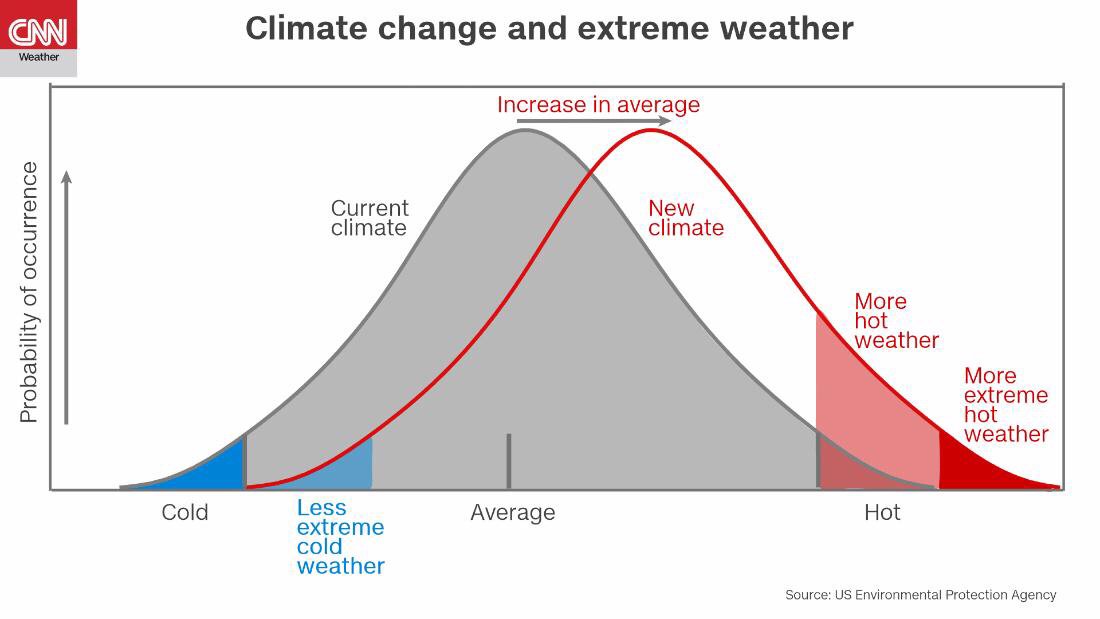
Yes, and in much simpler Opel and VW engines, they warm up to 115-120 degrees quite regularly. From such temperatures it is not far from “real” overheating, because the cooling systems are constantly under pressure and work at the limit. The slightest change in parameters or loss of tightness will immediately lead to a more serious breakdown.
Modern machines have a problem called “normal overheating”. This is when the control system cannot reduce the engine temperature to the optimum for this driving mode, despite the use of all possibilities, but the temperature is still less than the “emergency” temperature when the emergency sensor is triggered and the cooling system cannot withstand the pressure.
In some cases, there is a local increase in the temperature of a part of the motor above the design maximum. Despite the seeming “frivolity” of such a malfunction, it nevertheless quickly destroys the engine, and the driver of the car may not even be aware of the cause of all the troubles.
Most vehicles with a controlled cooling system over three years old are affected to some extent by this defect. At the same time, it is difficult for a non-professional to notice deviations in the operation of the engine. After all, the temperature indicator firmly indicates the “norm”, and the fact that the car drives a little worse, that the air conditioner cools worse, that fuel consumption is growing and oil is gradually being consumed, most drivers will not notice.
By the way, a visit to the service here, most likely, will not help, because in the error logs, most likely, it will be empty. But the discrepancy between the desired and actual operating temperature in the meantime is up to 30-40 degrees. These kinds of problems are simply inherent in the design of modern European cars. For the sake of the indicators of environmental friendliness and economy already mentioned above, they are “obliged” to warm up to 120-130 degrees at idle. This is too much for work under load, but for standing still in a traffic jam, it is quite acceptable. But here you are moving away, and even want to “grab”. Instantly drop the temperature to the optimal “running” 85-90 degrees is impossible, so the motor will spin at very dangerous temperatures for some time.
But here you are moving away, and even want to “grab”. Instantly drop the temperature to the optimal “running” 85-90 degrees is impossible, so the motor will spin at very dangerous temperatures for some time.
As a consequence – detonation, damage to the pistons and chipping of the coatings of cylinder liners on “all-aluminum” engines. And also low oil pressure, which means scuffing and sticking. And the temperature of the piston and piston rings under load rises sharply, and the oil cokes. And with age, the problem grows, because due to dirty radiators, pump belt slippage, deterioration of heat transfer from the walls of the cylinder head, aging of the cooling system fans and voltage drops, the engine operating temperature gradually ceases to decrease from “idle” 130 to “running” 90 even during prolonged operation under load.
Thus, the “maximum operating” temperature becomes simply “operating”, and the emergency operation becomes standard for the engine, with all the ensuing consequences.
Cars that spend a lot of time in traffic jams are especially bad. Their cooling system operates at the highest temperature most of the time, and motors usually do not withstand this for a long time. A few years later, the car becomes disabled. With an engine that confidently consumes liters of oil, with idle catalysts and half the power of the regular one. Yes, and “automatic” boxes get no less, because they are usually cooled through a heat exchanger, which means that the oil temperature in them is even higher than the temperature in the engine cooling system.
Abnormal overheating and death of the engine
“Classic” overheating with puffs of steam from under the hood, wedged engine and other fatal consequences although it is often the culmination of such a “normal overheating”, it is much less common.
If you stop the engine in time, then, most likely, serious problems can be avoided. Otherwise, you can already start choosing between a “contract” engine, repairing the remains of the old one or buying a new one.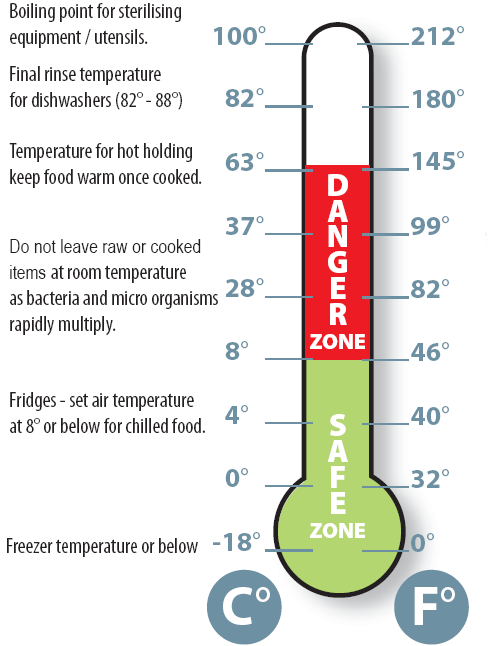 After all, warping of the cylinder head, violation of the geometry of the cylinder block and violation of the thread of the cylinder head bolts, scuffing of liners and pistons are only a small part of the malfunctions that occur during severe overheating and loss of antifreeze.
After all, warping of the cylinder head, violation of the geometry of the cylinder block and violation of the thread of the cylinder head bolts, scuffing of liners and pistons are only a small part of the malfunctions that occur during severe overheating and loss of antifreeze.
The nominal cause of this trouble is usually a fluid leak from the cooling system. After that, the temperature of various engine components and the temperature gradient between its various elements rises, causing hardware breakdowns.
The true causes usually lie in “normal overheating” for a long time, aging of the materials of the cooling system, gradual degradation of the radiator capabilities, failure of the pump or its drive. Fortunately for many car owners, serious malfunctions manifest themselves in advance, for example, at the next maintenance, or by triggering antifreeze level sensors before a strong leak in the cooling system and an emergency overheating light under load.
And what to do?
If you have a modern car whose mileage has already exceeded 50,000, but you are going to drive it happily ever after (or maybe even bought a used version with 100+ mileage), then you will need tips on how to rid your car of normal overheating.
In the next part of the article, we will talk about the optimal driving mode and some engine design improvements that will help avoid overheating and have an extremely positive effect on its resource.
practice
New articles
Articles / Laws
What has changed in the rules of car insurance since June 1, 2023
We told in detail what the Green Card is, why it is needed and how it works. However, as of June 1, 2023, it stopped working in most countries. Let’s take a look at what has changed…
3666
0
3
06/05/2023
Articles / Interesting
5 reasons to buy and not to buy Audi A6 IV (C7)
Is Jeremy Clarkson right when he thought Audis were too correct in terms of handling, and therefore boring? Is it true that the prevailing opinion is that after a run of 150 thousand kilometers, Audi turns . ..
..
4703
29
0
06/04/2023
Articles / Used cars
Mazda CX-5 I with mileage: make anticorrosive and take care of the windshield
The 2011 Mazda CX-5 replaced two crossovers at once: the not-so-popular CX-7 and the compact Tribute, which is even more outlandish on our roads. It is all the more surprising that the CX-5 turned out to be …
2729
15
1
05/31/2023
Popular test drives
Test drives / Test drive
Test drive Geely Monjaro: better than Volvo?
In China, this full-size crossover debuted two years ago under the dissonant name Xingyue L and factory index KX11. In Russia, the car was certified in 2022, and in …
In Russia, the car was certified in 2022, and in …
14685
8
907.04.2023
Test drives / Test drive
Nappa, lockdowns and tank reversal: test drive the Tank 300 off-road vehicle
Mountainous Khakassia, Chests massif. A steep ascent and a rut with deep gullies leading to the summit. It seems that it will be difficult – after all, in each such scour, the car hits a diagonal…
8829
14
4
03/02/2023
Test drives / Test drive
Love according to instructions: test drive GAZ Sobol NN
Sable NN waited a long time. GAZelle NEXT appeared – but there is no Sable NEXT. GAZelle NN came out – but Sable NN is not visible. It seems that there are not so many differences between the GAZelle and the Sable, it would be possible to build it …
GAZelle NN came out – but Sable NN is not visible. It seems that there are not so many differences between the GAZelle and the Sable, it would be possible to build it …
7270
1
1355
03.03.2023
HOW DANGEROUS HIGH TEMPERATURES FOR THE CAR AND THE DRIVER?
Everyone was waiting for the warm season. But the high temperature overboard can bring not only joy. Heat, unfortunately, poses a serious danger – both for the car and for passengers.
Auto Sunstroke
High heat can easily overheat the engine. Therefore, its temperature must be constantly monitored. Well, periodically check the coolant level.
If there is enough antifreeze in the tank, but the thermometer needle categorically refuses to leave the “red” sector, not particularly reacting to the connection of the fan, then there is a good reason to visit the nearest car service.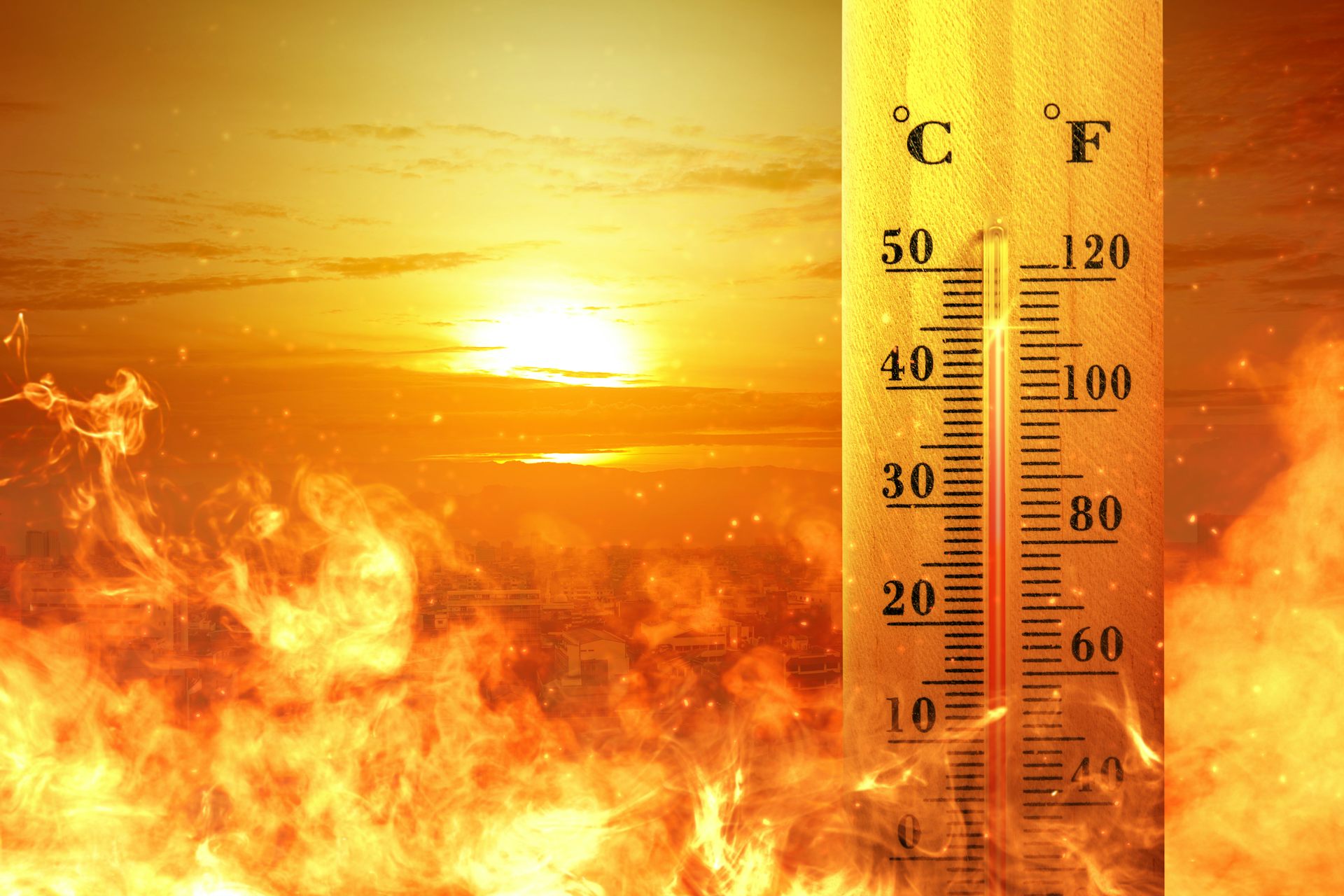 There, specialists will check the operation of the cooling system and, if necessary, flush it. By the way, this procedure should not be neglected, especially if the car is already a “grated roll”, having rewound more than tens of thousands of kilometers.
There, specialists will check the operation of the cooling system and, if necessary, flush it. By the way, this procedure should not be neglected, especially if the car is already a “grated roll”, having rewound more than tens of thousands of kilometers.
Flushing the system and radiators may not be limited. “Get out of the way” can, for example, a sensor that activates the fan. Or even the “propeller” itself.
All of the above problems can cause the engine to boil. If this happens, you need to immediately turn on the full “stove”, stop, and do not turn off the engine until the arrow of the temperature gauge starts to decrease. And then – turn off, open the hood and wait. It is strictly forbidden to ride a “steam locomotive” – the power unit can fail completely and irrevocably.
By the way, while waiting, you should not open the antifreeze tank – “to look” -. You can get a painful burn from hot steam.
As soon as the thermometer needle drops, you can add a little coolant, or, at worst, clean water – however, in this case, the antifreeze will have to be completely changed as soon as possible.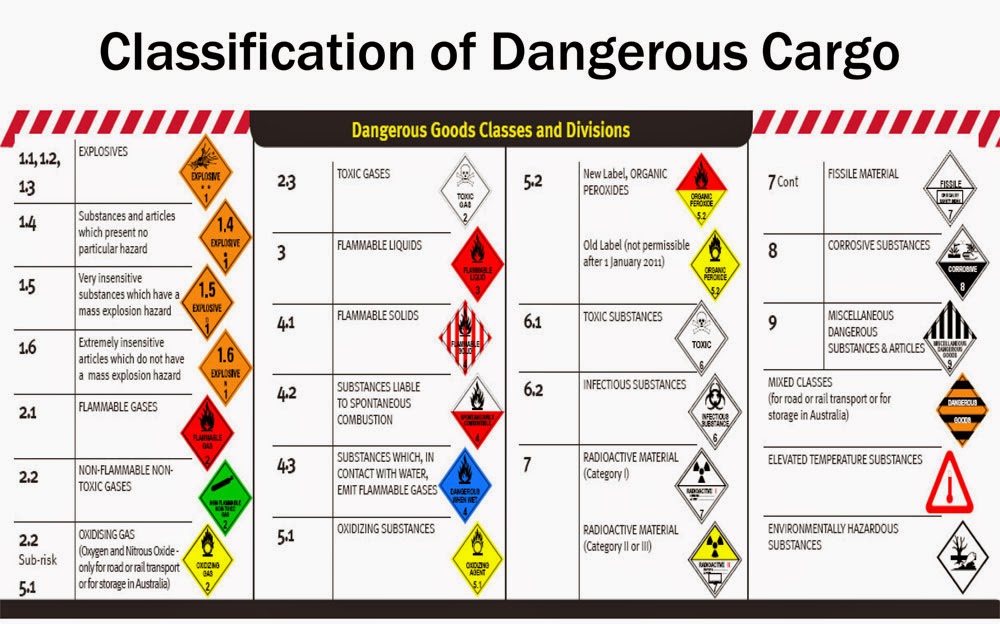 After that, you can go to the service to find out the reasons for the “boiling”.
After that, you can go to the service to find out the reasons for the “boiling”.
High temperatures can also damage the brakes. Everyone knows that when braking, the pads rub against the disc or drum. Understandably, their temperature rises. If it’s hot outside, the brakes just don’t have time to cool down. This is especially noticeable in traffic jams, where the snail’s speed (alternating with long downtime) is not able to “call for help” the blowing air flow. Overheating leads to a decrease in the performance of the pads and an increase in the braking distance.
Another problem may arise – the brake cylinders will suddenly begin to wedge, which leads to a distortion of the pads and their fixation in an intermediate position. If suddenly the car began to “fail” when braking, it is better not to take the time and stop by the service station.
Another problem is paint fading. Direct sunlight damages the paintwork of the car, making it much lighter. Moreover, the color does not change evenly throughout the car, but in places. Such “burns” are “treated” only by repainting.
Such “burns” are “treated” only by repainting.
Harm to the driver and passengers
Heat, of course, affects the human body. Due to the high temperature, it begins to fall asleep, and the body becomes relaxed. Therefore, if you are fully concentrated on the road, do not forget about other road users who cannot boast of such endurance. Their reactions are getting worse. So be prepared for the fact that the neighbors in the lanes may suddenly change lanes without looking in the mirrors, or decide to brake sharply, at the last moment.
And of course, no one canceled the irritability. Being in a painful traffic jam, on a hot day, drivers are able to break loose because of the slightest trifle. Not everyone has iron nerves, so running into ornate tirades addressed to you is as easy as shelling pears. But to answer them or not – everyone decides for himself.
If exposure to sunlight is prolonged, the possibility of overheating of the body cannot be ruled out. With heat stroke, the skin turns red, weakness, shortness of breath and even nausea appear.
With heat stroke, the skin turns red, weakness, shortness of breath and even nausea appear.
If the driver or passenger experiences something like this, it is better to stop. It is necessary to find a place in the shade, blown by at least a weak breeze. The victim should drink more water to restore salt balance. And if things are seriously bad, you must definitely take the victim to the hospital or call an ambulance.
The heat is especially dangerous for people suffering from cardiovascular diseases: the chances of getting a heart attack or stroke increase significantly.
What to do?
If the car is equipped with air conditioning or climate control, the driver and passengers will not have problems. If there are no such “gadgets”, you need to open the windows. After all, heat is not as terrible as stuffiness, and the slightest air circulation in the cabin can mitigate its harmful effects.
In addition, drink juice or water regularly. The body will require fluid in large quantities, and it is better to store it in advance. If the glove compartment “knows how” to cool – great. If not, you can purchase a special car refrigerator that runs on the cigarette lighter.
The body will require fluid in large quantities, and it is better to store it in advance. If the glove compartment “knows how” to cool – great. If not, you can purchase a special car refrigerator that runs on the cigarette lighter.
If you have a trip on a hot day or you know that you will definitely get stuck in a traffic jam, and the driver or one of his passengers suffers from heart disease, the first aid kit should be replenished with special medicines: Corvalol, Validol and similar drugs. A cooling bag will also come in handy. It is inexpensive, takes up little space, and when overheated, it will fit instead of ice.
To protect your car when parking in hot weather, you can attach a sunscreen to the windshield. It reflects the rays of the sun, protecting the panel from fading. Yes, and the interior does not warm up so much.
What not to do in the heat
First, turn on the air conditioner or climate control at full power. If overboard the temperature has exceeded 30 degrees, cooling the cabin to 15-17 degrees can lead to health problems.

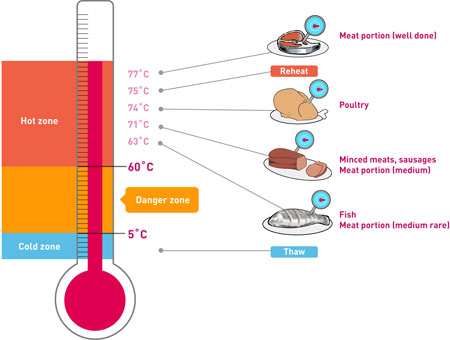 If your child displays other symptoms, like a cold or cough, call your child’s doctor sooner than you normally would.
If your child displays other symptoms, like a cold or cough, call your child’s doctor sooner than you normally would. 